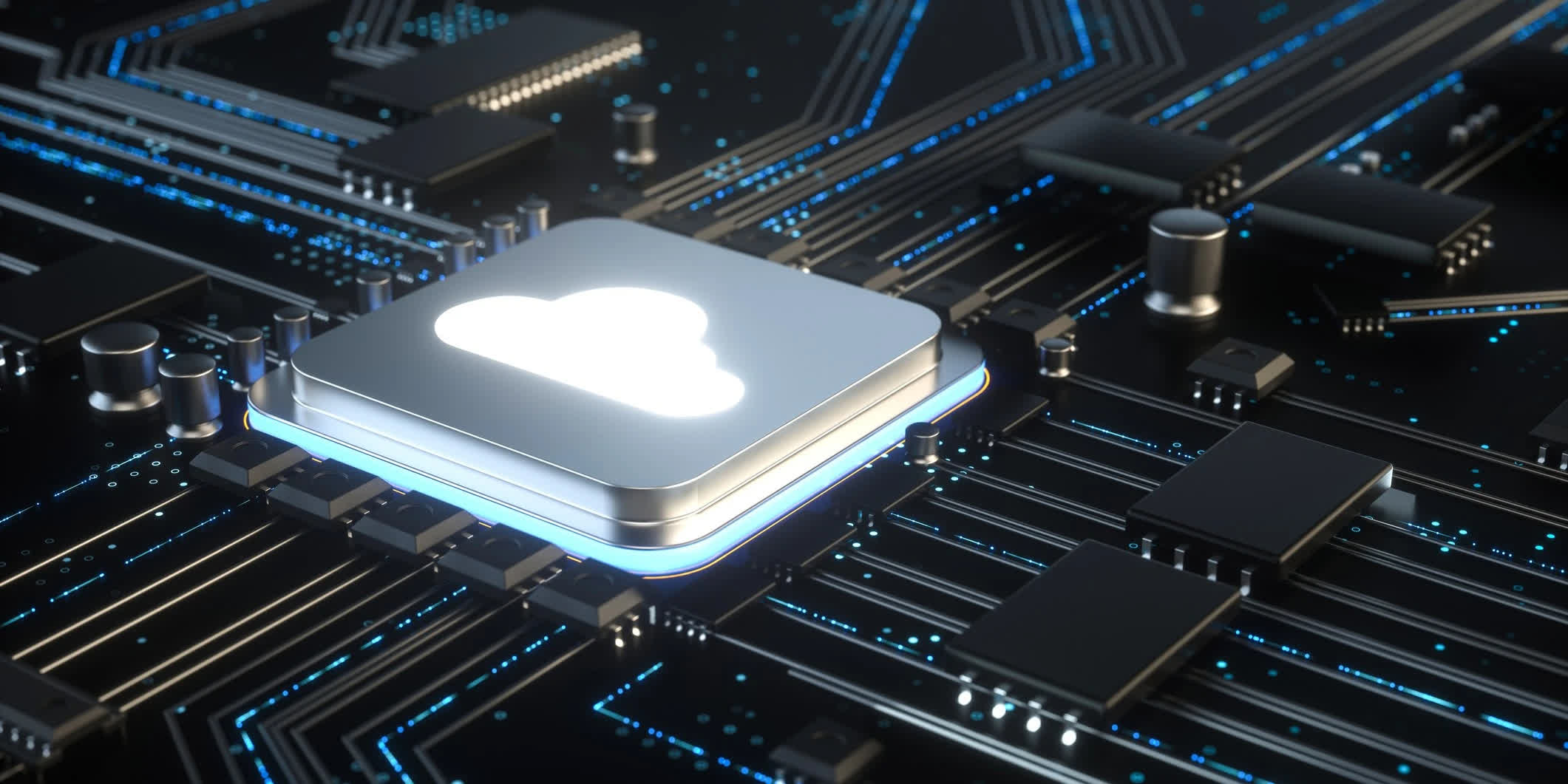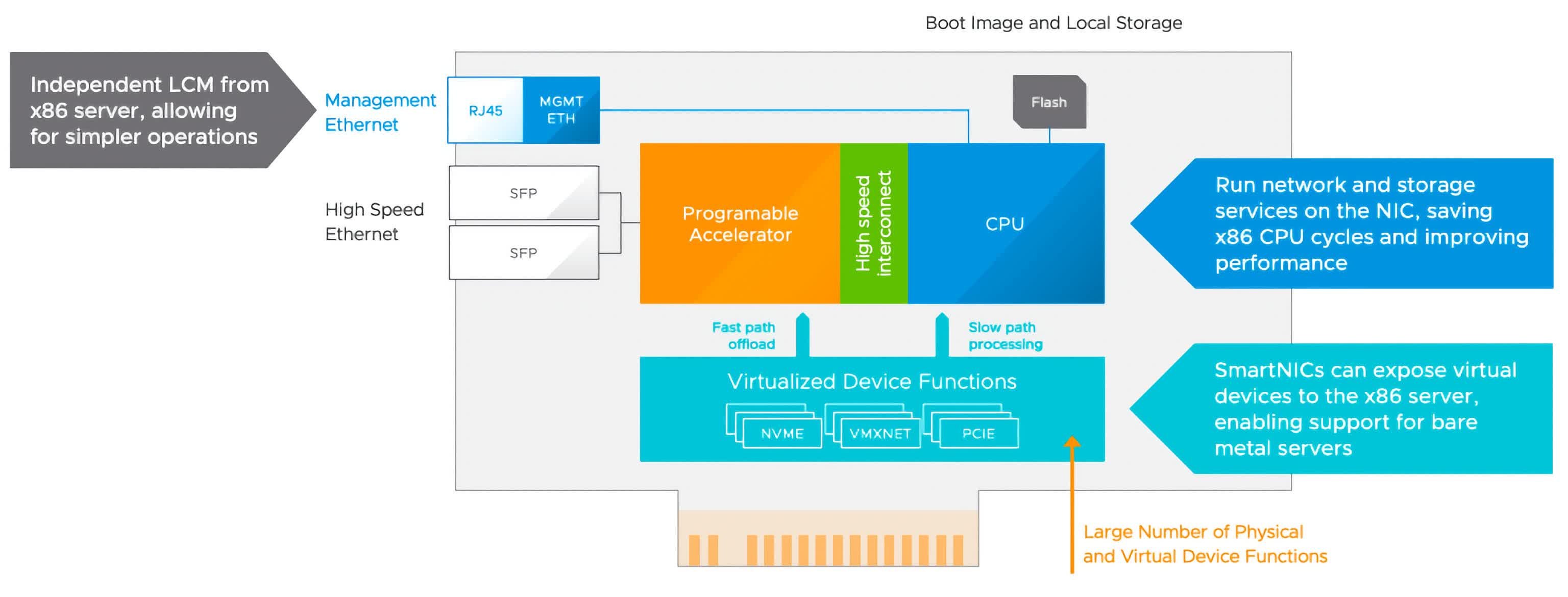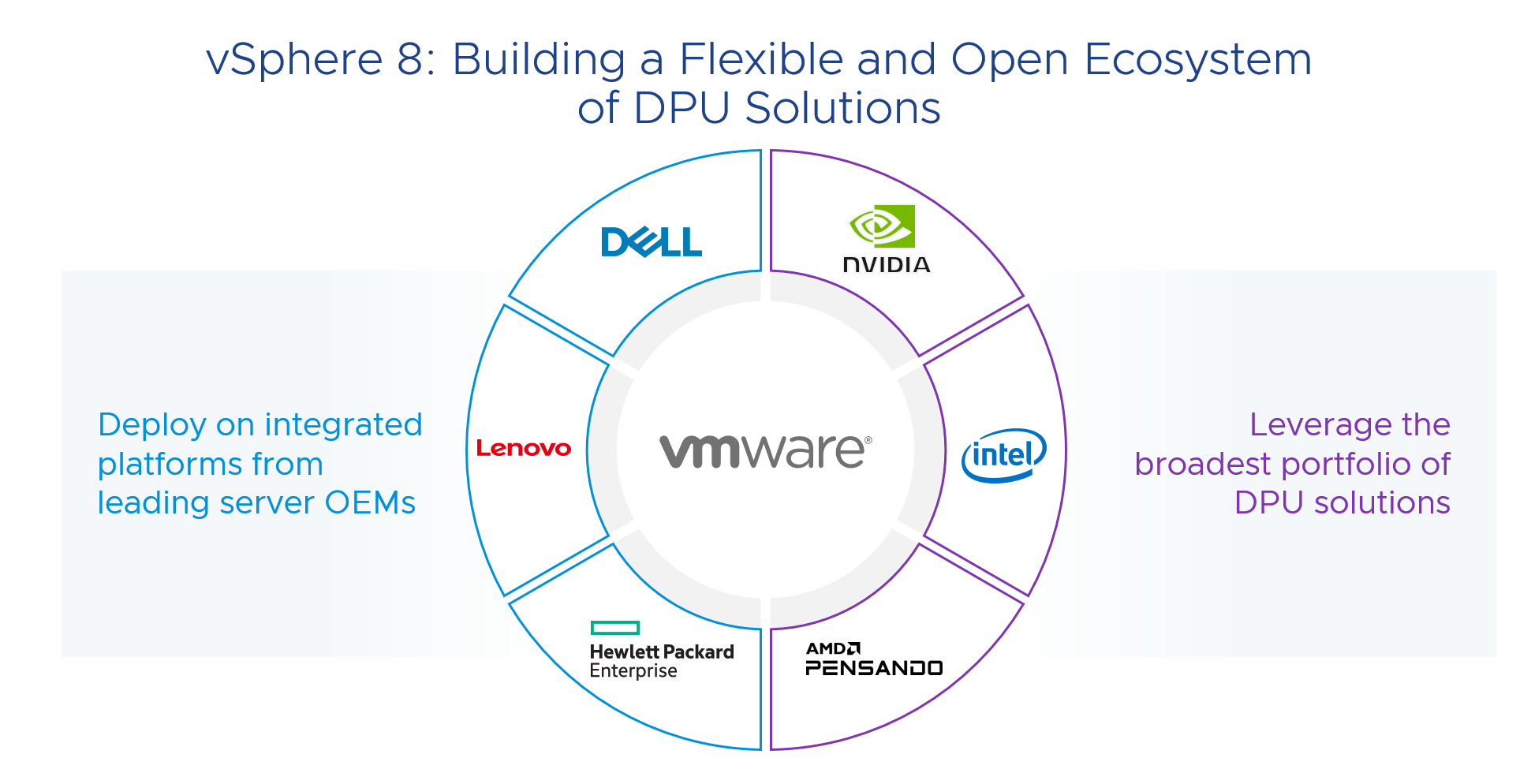Why it matters: Those who follow the semiconductor market know that chipmakers AMD, Intel, and Nvidia all compete in various markets, most notably CPUs and GPUs. What few may realize, however, is that all three of these companies are also competing in a market for a relatively new class of chip called a DPU, or Data Processing Unit.

Sometimes also referred to as a SmartNIC (Network Interface Card), DPUs are starting to make an impact in corporate and cloud datacenters because of their ability to offload certain infrastructure tasks from a server's main CPU. With the official launch of VMware's vSphere 8 and support for Project Monterey, officially known as the vSphere Distributed Services Engine, the awareness and impact of DPUs is bound to get much larger.
This latest version of VMware's cloud virtualization platform is bringing support for new server architectures using DPUs from AMD and Nvidia. In addition, new server systems incorporating those DPUs are being introduced by Dell and HPE. Support for Intel-based DPUs and server systems from Lenovo will follow in subsequent releases.
Intel has been developing its DPU technology for several years, but both AMD and Nvidia acquired other chip companies to bring DPUs into their portfolios. Nvidia purchased Mellanox Technologies in 2020, and AMD purchased Pensando Systems earlier this year.
An overview of a DPU / SmartNIC
Early on, in talking about the purchase of Mellanox's Bluefield DPU, Nvidia emphasized the growing importance of what they called "east-west" traffic in a datacenter. This basically referred to the network traffic that went from one server rack to another nearby rack as the result of the growing use of cloud-native, containerized applications that used these types of connections.
Using vSphere's Distributed Services Engine, we're seeing an even more compelling application of DPUs from all the vendors. These leverage the onboard compute and storage capabilities that DPU server expansion boards also include. Specifically, DPUs are SoCs (system on chips) that include an Arm-based CPU core and a dedicated accelerator that's designed to handle the infrastructure requirements (such as connecting to storage, performing networking, security tasks, etc.) that modern container-based applications require.
The vSphere Distributed Engine offloads these infrastructure services from the server CPU to the DPU, freeing the CPU up to work on the actual application workload. The result is better consolidation of workloads, more efficient performance on these core workloads, as well as separation of application workloads from those solely focused on infrastructure tasks, such as distributed firewalls, network traffic routing, and other storage and network-focused efforts.
The software layer manages the lifecycle and what runs on the DPU. Down the road, a potential added benefit of this arrangement is that DPUs would also be able to connect with bare metal servers that run their own dedicated OS and application workload. The end result would be that any combination of virtualized, containerized, or bare metal workloads would all be capable of being managed from a single location via VMware's Tanzu portfolio of modern application development and management tools.
VMware also made several announcements around its end user computer offerings at VMware Explore.
The company focused on enabling more effective hybrid work scenarios via the concept of Workspaces, that integrate easy access to all corporate applications and key data across a range of different devices. There's also a strong focus on automation of the workspaces and on leveraging technologies like AI to help predict and prevent potential problems.
The company also continued to refine its Horizon desktop-as-a-service cloud client computing solution with new enhancements in root cause analysis tools for Help Desk personnel. VMware previewed an automation tool for mobile devices, called Freestyle Orchestrator, that is designed to ease the process of provisioning mobile devices for use in corporate environments.
Given all the focus that's been placed on Broadcom's intended purchase of VMware and the concerns that has raised, it's good to see that VMware doesn't seem to be distracted by this and continues to make the kind of technical innovations it is known for.
Bob O'Donnell is the founder and chief analyst of TECHnalysis Research, LLC a technology consulting firm that provides strategic consulting and market research services to the technology industry and professional financial community. You can follow him on Twitter @bobodtech.
https://www.techspot.com/news/95832-vmware-brings-life-data-processing-units-amd-intel.html

